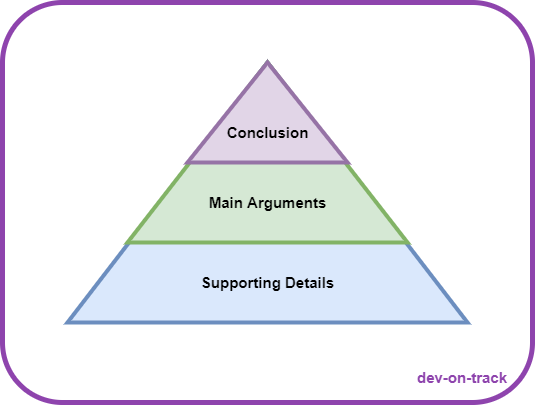Improving asynchronous communication at work
by Graciele Damasceno
Working remotely can impose a few unexpected challenges. When in need of help in an environment where everyone is physically sharing the same space, we can just lean to a colleague in a coffee break and ask for help, pointing frantically to the screen while explaining what we were doing before that doesn’t work anymore now.
However, in a remote environment, sometimes asking for help or get questions cleared up can be quite a challenge! First, I’ll thoroughly analyze the chat, looking for someone that is available that might know the answer to my problem, secretly hoping that the person does not change their status to “busy” or “do not disturb” in the next five seconds. Great, they are available! I’ll call them. No, that’s too abrupt; I’ll send him a message.
Me: Good morning Joe, how are you?
And… nothing. Joe doesn’t respond immediately. Maybe he didn’t catch my message, that happens time to time. Let’s try to get his attention again:
Me: Are you busy?
Nothing. I’m stuck! Joe needs to answer me so I can move on. He is the only one who can. Every second that takes for him to answer me is a wasted time that I can’t get back.
Joe: Hi Gracie. I’m doing fine. What about you?
GREAT! It took a while to answer me, however, he only answered my first question. Let’s try again:
Me: I’m good, thanks. Can you help me with something?
…
Joe is gone again. He didn’t reply me.
And I’m still stuck.
What is the problem here?
Maybe Joe is super busy and didn’t updated his status. Maybe he is trying to solve a problem of his own. Maybe he is helping someone else. Maybe he is taking a coffee break. Maybe his internet connection is not so good right now. Maybe he got distracted and forgot to reply. Maybe…
We can never know what the other person is up to in a remote scenario. You can’t glance at them and see their super concentrated expression, that don’t-even-try-to-bother-me one. While remote, one thing that we must keep in mind is that we should learn to work asynchronously.
Not all the time the other will be available to you, and that’s fine (the problem lies when they are never available to anyone, but that’s discussion to another topic…). Just like you are not available to help all the time. So, we can use some techniques to get the most of everyone’s available time.
Getting back to our scenario: Joe replies me three hours later with:
Joe: Yes, sorry for the delay. What’s going on?
I don’t even know where to start my question. So I send:
Me: Can I call you to show my problem?
Here comes a few ramifications of this scenario:
-
Joe is available to chat now. I’ll call him, and will explain what I was trying to do, and what is not working. After five minutes listening, he will ask me if I have tried doing this or that, I’ll say that no, I haven’t yet, and he will wait while I try his suggestion. It worked! Great.
-
Joe is available to chat now. I’ll call him, and will explain what I was trying to do, and while I explain, I notice that… Something doesn’t feel right. I listen to myself explaining and realize that I can get now the root of my problem. I notice that my logic is flawed, or that I had a shallow understanding of what I was doing. While I speak, my voice slowly fades, and I proudly exclaim that I got it! I readily fix the problem, awkwardly thanks Joe for his time and move on.
-
Joe is not available to chat now. I look for someone else to help me.
Let’s examine some techniques to improve those scenarios.
1. How to effectively write questions to get asynchronous and precise answers
In the first scenario, I called Joe and explained from the beginning what I was trying to do. We can notice that a lot of precious time was spent waiting for Joe to reply me before explaining my problem. Is there a way to do better in those situations?
I could explain by text to Joe, so that when he sees my message, he can spend some time thinking and give me the best answer he can. There are a few techniques that can be used to improve the quality of written communication; let’s check out the Minto Pyramid (you can read more about this method of writing by visiting untools website.)
The Minto Pyramid is a technique to write better and communicate in a more efficient and clear way. It focuses on primarily sharing the gist of the problem right away, elaborating on the details later by following three steps:
-
To start, capture the spectator’s attention right away by telling them the main gist of the problem right at the start. It’s a pretty efficient start, since it can engage the listener to think and actually focus on the main problem.
-
Next, support your question by giving brief key arguments and points, explaining main details about the problem.
-
Now is time to give all the little details that you have: what have you tried, the specifics of the problem, things that might be interfering with your final result, some guesses of your part… If the person is really busy and already know the answer, they might skip this part unconsciously, but sometimes is still necessary to enrich the context.
Let’s rewrite our very first message to Joe with all that in mind:
Me: Hey Joe! I’m trying to access our database, however, the connection is being refused.
I need to connect to the database so I can check our table attributes to finish another task.
I tried to check if my username and password is correct and also my proxy settings, and everything appears to be working fine. I also switched between using the command line and a GUI tool, but no luck yet.
Could this be an access problem? Maybe I am not authorized to access it?
After a while, Joe reply my message:
Joe: Hello! I just checked in the main system and yes, it was due an authorization problem. You didn’t had a valid permission granted to access the database, but I just fixed it. You’re good to go!
Can you see how quicker the exchange was? With only two messages exchanges, my problem was solved. I wrote all the important parts in only one message, just like an email, where the other person could take a while to receive and reply me.
This writing technique also leads us to…
2. The art of getting answers without even needing to properly send a question to anyone, also known as: the rubber duck theory
Most of the time, just the simple act of organizing our thoughts can be very beneficial to problem-solving. As an experiment writing the question of the scenario above in a notepad, without even sending, I could easily reach the same conclusion that Joe did.
This directly correlates with the fact that one explaining something complex to someone else can vastly improve their knowledge about the problem itself and sometimes lead to the solution.
Trying to analyze the problem with someone else eyes can also improve the quality of our questions, removing redundancy and getting straight to the point easily.
However, sometimes analyzing the problem isn’t enough. Sometimes, we can’t find an answer ourselves and our first instinct might be to ask someone else, but why not to ask ourselves:
3. Do you know Google-Fu?
The last resort before asking for help could be to Google it. At this rate, we already isolated the problem and had some thought about it and the context, so why not search for it on the web? It might clarify or solidify some points of our understanding of the situation.
The “google searching” experience can be improved by:
-
Using google advanced search operators, such as double quotes;
-
Being mindful of keywords chosen to search for, trying to focus on the main purpose of the search;
-
If is something very specific, trying to search in multiple languages, if possible;
-
Do not be afraid to look at multiple links and sources while searching! The answer might be in one of them;
-
Trying other search engines.
With all that said, there’s also one more skill to develop - this one being harder to balance: In what occasion we should talk in person. Sometimes it is just better to call someone else to share news, ask for advice or just chat; this increases bonding in the team, which is very important to improve the team’s synergy. Another point is that not everyone is comfortable writing their thoughts in text. In that case, trying to communicate more by using messages in everyday life can be an excellent way to improve written and spoken communication skills.
Subscribe via RSS

